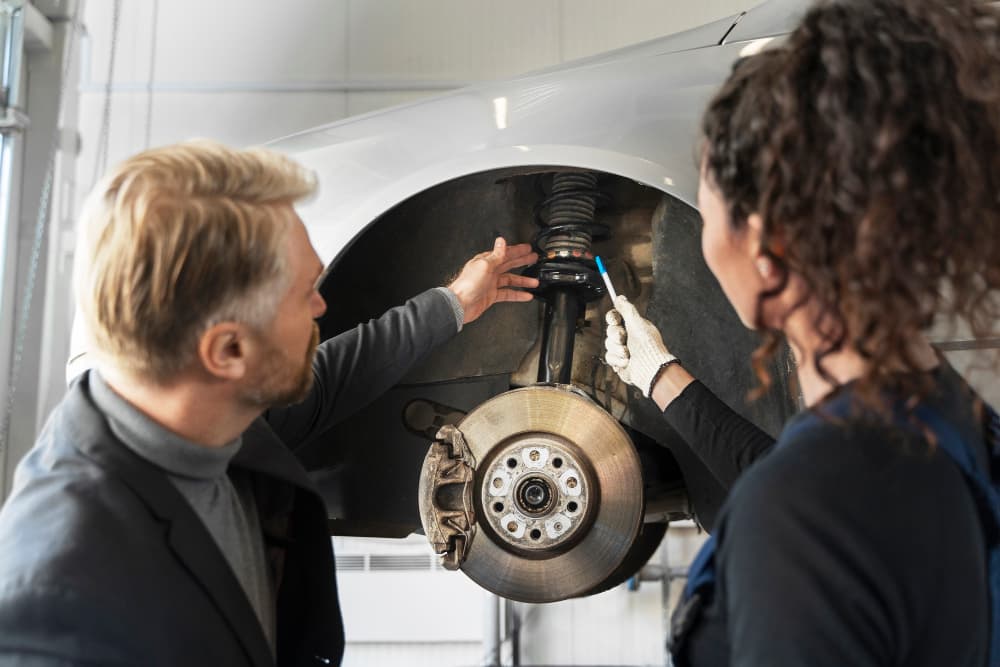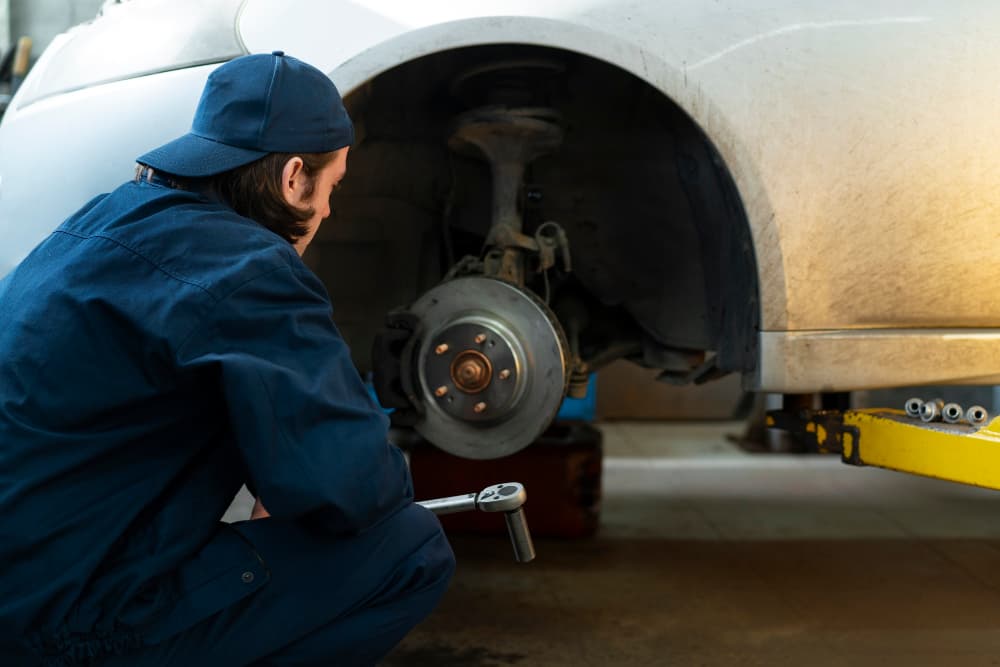Car Care Tips, Roadside Assistance Guides & Emergency Service Insights
LATEST ARTICLES

Broken Axle Signs You Must Not Ignore
Imagine cruising down the highway when suddenly you hear a sharp clunk beneath your vehicle, followed by an unsettling vibration. You grip the steering wheel tighter, unsure of what’s happening. These could be early warnings of a broken axle — a critical issue that drivers often underestimate. The axle is what keeps your wheels rotating […]
Imagine cruising down the highway when suddenly you hear a sharp clunk beneath your vehicle, followed by an unsettling vibration. You grip the steering wheel tighter, unsure of what’s happening. These could be early warnings of a broken axle — a critical issue that drivers often underestimate. The axle is what keeps your wheels rotating […]

Common Reasons Your Clutch Stops Working
Introduction Imagine you’re driving smoothly down the highway, and suddenly, your gear refuses to shift — your car revs, but it just doesn’t move as it should. This is one of the most frustrating experiences for any driver, often pointing to an issue with the clutch not working. For most car owners, the clutch system […]
Introduction Imagine you’re driving smoothly down the highway, and suddenly, your gear refuses to shift — your car revs, but it just doesn’t move as it should. This is one of the most frustrating experiences for any driver, often pointing to an issue with the clutch not working. For most car owners, the clutch system […]

Clutch Repair Guide for Smooth Performance
Every vehicle owner knows that feeling when the car starts to hesitate during gear shifts or makes an unfamiliar noise while accelerating. That could be a sign that your clutch system needs attention. The clutch is a vital component that bridges the engine and transmission, ensuring your car runs smoothly. Without proper care, even a […]
Every vehicle owner knows that feeling when the car starts to hesitate during gear shifts or makes an unfamiliar noise while accelerating. That could be a sign that your clutch system needs attention. The clutch is a vital component that bridges the engine and transmission, ensuring your car runs smoothly. Without proper care, even a […]

Brake Fail Signs You Should Never Ignore
Few driving experiences are more terrifying than pressing your brake pedal and realizing your vehicle isn’t slowing down as expected. A sudden brake fail can turn an ordinary commute into a life-threatening emergency within seconds. Whether you’re cruising down a highway or navigating city traffic, your braking system is your car’s most crucial safety feature. […]
Few driving experiences are more terrifying than pressing your brake pedal and realizing your vehicle isn’t slowing down as expected. A sudden brake fail can turn an ordinary commute into a life-threatening emergency within seconds. Whether you’re cruising down a highway or navigating city traffic, your braking system is your car’s most crucial safety feature. […]

Steering Wheel Locked While Driving? What to Do
Imagine you’re driving down a familiar road when suddenly, your steering wheel locks mid-turn. Panic sets in, your mind races, and your heart pounds as you struggle to control the vehicle. Situations like this can be terrifying, especially when you don’t know why it happened or how to respond. Knowing what to do when your […]
Imagine you’re driving down a familiar road when suddenly, your steering wheel locks mid-turn. Panic sets in, your mind races, and your heart pounds as you struggle to control the vehicle. Situations like this can be terrifying, especially when you don’t know why it happened or how to respond. Knowing what to do when your […]

What to Do When Your Car’s Axle Breaks
Imagine you’re driving home after a long day, and suddenly your car makes a loud snapping noise followed by an unsettling wobble. You pull over, confused and alarmed, only to discover your vehicle’s axle has broken. A broken axle isn’t just a mechanical failure it’s a complete disruption to your mobility and safety. Whether you’re […]
Imagine you’re driving home after a long day, and suddenly your car makes a loud snapping noise followed by an unsettling wobble. You pull over, confused and alarmed, only to discover your vehicle’s axle has broken. A broken axle isn’t just a mechanical failure it’s a complete disruption to your mobility and safety. Whether you’re […]






